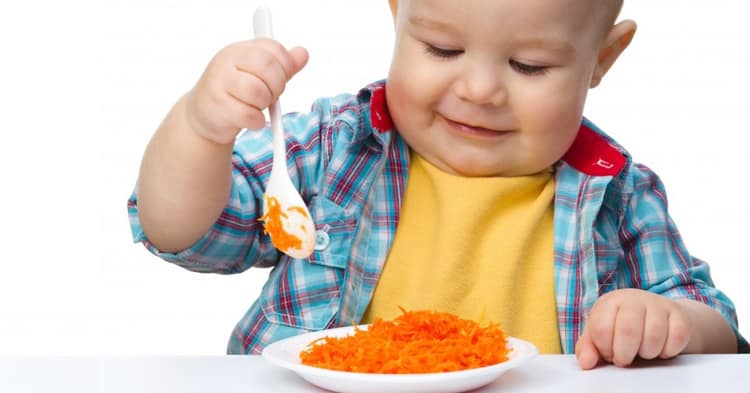From the hands-on examination and exploration of a watermelon, a pumpkin, corn on the cob, apples and applesauce, to color-themed food parties, children love to explore and discover different foods. Research shows that experiences like food tastings support an early understanding of nutritious foods. The more experiences young children have, the more likely they will be to accept nutritious foods as part of a healthy diet.
Teaching children about nutrition isn’t just a nice add-on or a theme for Nutrition Month, it’s a core component of physical health. As included in the Arizona Early Learning Standards, health and nutrition should be included as a part of any quality early learning program.
So, what are some ways to intentionally support children’s nutrition learning? Here are a few tips to get you started, based on the age and development of the children in your care.
Support babies’ recognition of hunger and fullness. You can set the foundation for a lifetime of healthy eating habits, starting in infancy. Offer food when infants show initial signs of hunger, and watch their cues to show you when they are full. Following a baby’s cues for feeding helps them learn to recognize hunger and fullness. Label these feelings with words, for example, by saying, “You’re sucking on your fingers. I think you’re hungry. I’ll warm up your bottle and see if you’re ready to eat,” and “You drank most of your milk, and now your tummy is full. That feels better, doesn’t it?” This helps babies begin to develop a healthy relationship with food.
Engage the senses of toddlers. With close supervision, toddlers can begin exploring nutritious new foods with all their senses. When introducing new foods to toddlers, guide them to experience all the sensations; sights, sounds, smells, textures and tastes. One fun activity to do with toddlers is to explore a watermelon. First put out a whole watermelon for children to investigate with a focus on sight, touch, thumping and smelling. After the initial investigation, serve children small pieces of the melon to explore the taste and texture with their mouths. Most children love the sensation of the juice on their hands and the fine motor challenge of picking at those tiny white seeds. One important fact to note is that children at this age are at a heightened risk of choking, and should be supervised closely at all times, especially when eating. Stay within arm’s reach and watch closely during meals and food tasting activities. Never offer foods that are likely to cause choking, such as raw carrot rounds, whole grapes, or hot dogs. Offer finger foods cut into half an inch or smaller. Check out these guidelines to avoid choking hazards from Caring for our Children.
Build nutrition knowledge with preschoolers. With guidance, young children begin to learn that proper nutrition is an important part of overall health. Introduce cooking activities using healthy foods, and enhance your curriculum with fun nutrition-focused games, songs, stories, hands-on experiences and lessons. The USDA website includes nutrition education resources for preschool, including the free Grow It, Try It, Like It education kit.
As an early childhood educator, you already know that children learn by observing the adults in their lives, and they are expert imitators. Be sure children catch you enjoying nutritious foods and hear you talking about nutrition in a positive way. During meals, sit with children, model good eating habits, and make sincere comments about the healthy food you eat. Statements like, “I love the way my tummy feels after a nice green salad,” or “These potatoes are going to give us lots of energy for running on the playground,” can be great conversation starters and help children understand the role nutrition plays in how their bodies function.
In all your efforts, how you partner with families will determine your impact. Create meaningful opportunities for families to be involved, such as helping create meal plans, leading nutrition activities, or sharing their own family traditions involving healthy foods. Communicate with families so you can work together to teach healthy habits and build nutrition knowledge. Your intentional efforts, combined with family partnerships will result in a lasting impact on the food choices children make throughout their lives!
Have a success story you’d like to share? We’d love to hear how you are supporting children’s knowledge of healthy eating. Email the Quality First team at qualityfirst@firstthingsfirst.org.
Heidi Walton is Quality First program coordinator at First Things First.
